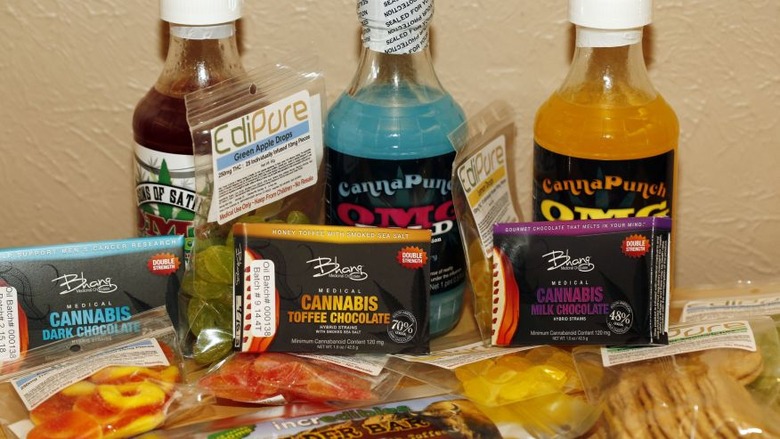This Will Tell You How Much Marijuana Is Really In That Edible
The murky laws surrounding the world of cannabis laced goodies means that those who eat them often have no idea how much marijuana they are really consuming.
But a group of scientists say they have invented a new technique that accurately measures the levels of cannabidiol (CBD) in food made with marijuana, according to a press release from The American Chemical Society (ACS)
Today most edibles are analyzed using a device called a high performance liquid chromatograph, or HPLC. But HPLCs don't actually give accurate readings for food stuffs.
"These machines were never designed for you to inject a cookie into them," Jahan Marcu, director of research and development at Green Standard Diagnostics Inc. and a senior scientist at Americans for Safe Access said. "The sugars, starches and fats will wreak havoc on HPLC equipment. They can really muck up the works and lead to inaccurate results."
Marcu, together with Melissa Wilcox of Grace Discovery Sciences and others working with the ACS, developed a new testing method that basically breaks down the edible good into diverse particles that are better read by the HPLC.
Scientists first placed samples of food laced with cannabis into a cryo-mill with dry ice or liquid nitrogen. Then they added abrasive diatomaceous earth — a silica-based compound sometimes used to keep snails out of gardens — and ground the mixture to create a homogenous sample.
Using a technique called flash chromatography, the scientists were able separate the various chemical components of the sample which allowed them to inject liquid containing only the cannabinoids into an HPLC for analysis.
The researchers say this new process could yield "far more accurate and reliable measurements of THC and/or CBD levels in an edible product than was previously possible." It has already been found to accurately measure cannabis content in gummy bears, brownies, cookies and certain topical lotions.
"Producers of cannabis edibles complain that if they send off their product to three different labs for analysis, they get three different results," says Wilcox. "The point of our work is to create a solid method that will accurately and reliably measure the cannabis content in these products."
Last week, the team presented their work at the 251st National Meeting & Exposition of the ACS. Marcu hopes that the equipment can be installed into commercial labs and then train technicians how to measure CBD levels on a large scale.
The new method could have far reaching implications for dispensary standards as more and more states start to legalize marijuana use for both recreational and medical purposes.
Related:
- Amy Schumer leaves $1,000 tip for 'Hamilton' bartenders
- Starbucks pledges to donate all uneaten food to the hungry by 2021
- Traveling to Brussels? US airlines issue travel vouchers after attacks
- Carnival Cruise Line to start sailing to Cuba in May
- Fire disrupts Disney's Lion King show at Animal Kingdom
This article was originally published on March 22, 2016
